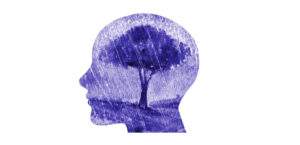The science of mindfulness-based interventions into anxiety and depression
In 1992, Zindel Segal, John Teasdale, and Mark Williams collaborated to create an eight-week program modeled on MBSR. Jon Kabat-Zinn—who developed MBSR—had some initial misgivings about the program, fearing the curriculum might insufficiently emphasize how important it is for instructors to have a deep personal relationship with mindfulness practice. Once he got to know the founders better, he became a champion for the program. In 2002, the three published Mindfulness-Based Cognitive Therapy for Depression: A New Approach to Preventing Relapse, now a landmark book.
MBCT’s credibility rests firmly on ongoing research. Chief among them are two randomized clinical trials (published in 2000 and 2008 in The Journal of Consulting and Clinical Psychology) indicating MBCT reduces rates of relapse by 50% among patients who suffer from recurrent depression. Recent findings published in The Lancet in 2015 show combining a tapering of medication with MBCT is as effective as an ongoing maintenance dosage of medication.

MBCT Reduces Depressive Relapse: Study
Research shows MBCT reduces rates of relapse among patients who suffer from recurrent depression. The paper’s co-authors reflect on its findings and ask, “What do we know? Is MBCT safe?” Read the article.
The Core MBCT Practice
A skills-based approach, MBCT asks patients to inquire into, familiarize themselves with, and redirect the thought process that is getting them into trouble (cognitive distortions, or what some people call “negative self-talk,” or “stinkin’ thinkin’”). It takes close attention and stick-to-itiveness to make it work, which is why a practice that allows one to develop the habit of seeing thoughts without immediately reacting could be an ideal adjunct to the cognitive practice—and in fact create a hybrid that is more than the combination of the two. When CBT meets mindfulness, the emphasis shifts from changing or fixing the content of our challenging thoughts to becoming more intimately and consistently aware of these thoughts and patterns. The awareness itself reduces the grip of persistent and pernicious thought loops and storylines.
Like MBSR, the eight-week program occurs in two-hour weekly classes with a mid-course day-long session. It combines guided meditations with group discussions, various kinds of inquiry and reflection, and take-home exercises. “Repetition and reinforcement, coming back to the same places again and again, are key to the program,” Segal told Mindful, “and hopefully people continue that into daily life beyond the initial MBCT program, in both good times and bad.”

Is MBCT the Future of Therapy?
Fifteen years after Mindfulness-Based Cognitive Therapy was introduced to the world, this groundbreaking treatment only reaches a small percentage of people suffering from depression. Two innovators want to change that. Read the full story.
Video: Watch the 3-minute breathing space
This is one of the most popular practices in the 8-week MBCT program. It allows you to shift your attention away from automatic, multitasking patterns of thought to help you get unstuck. It invites you to bring attention to your experience in a wider, more open manner that isn’t involved in selecting, choosing, or evaluating, but simply becoming aware of your thoughts and feelings, your breath in various regions of the body, and finally, sensations throughout the entire body.
Trapped Inside A Painful Mood? How Acceptance Helps
Being unwilling to experience negative thoughts, feelings, or sensations is often the first link in a mental chain that can lead to automatic, habitual, and critical patterns of mind becoming re-established. By accepting unpleasant experiences, we can shift our attention to opening up to them. Thus, “I should be strong enough” shifts to “Ah, fear is here,” or “Judgment is present.”
—Zindel Segal, Professor of Psychology in Mood Disorders, University of Toronto, and co-founder of Mindfulness-Based Cognitive Therapy.
Read more about how acceptance, a key aspects of MBCT training, helps you work with tough emotions.
4 Ways to Calm Anxiety Every Day
1) Explore your breath: Is it shallow and choppy, or long and smooth? Calm the rush of panic to your body with this anti-anxiety breathing practice.
2) Get out of your head and into your body. Try these 11 ways to engage your senses
3) Explore different approaches. Here are 10 mindful attitudes for decreasing anxiety.
4) Forgive yourself when you’re feeling too anxious to meditate (it happens). Consider these informal practices instead.
Video: Watch 3 Ways to Get Out of Panic Mode
Sometimes it suffices simply to pause and take deep breaths, expanding the inbreath and slowing the outbreath—a technique that helps during 2 a.m. flopsweats.
—Barbara Graham, noted essayist and author
Read more on Barbara’s journey through anxiety.
MBCT Resources
As is typical for mindfulness-based interventions, no overarching body governs MBCT, but a number of very qualified senior teachers have taken it on since the program was founded, and centers in Toronto, the UK, and San Diego offer professional training and certification.
- Centre for Mindfulness Studies, Toronto
- UC San Diego Center for Mindfulness
- Oxford Centre for Mindfulness, UK
This web extra provides additional information related to an article titled, “Confessions of an Anxious Meditator,” which appeared in the April 2017 issue of Mindful magazine.
The post Mindfulness for Anxiety: Research and Practice appeared first on Mindful.
from RSSMix.com Mix ID 8196908 http://www.mindful.org/mindfulness-for-anxiety-research-and-practice/


No comments:
Post a Comment